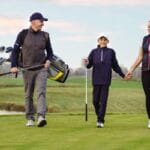By Dr. Nina Radcliff
Often people share with me that when they think of impactful “exercise,” they think of a gym, workout machines, regular and rigorous routines, along with trainers and at least an hour dedicated several times a week. And while there are benefits that can come from having a gym membership, you don’t need to head to a gym to be physically active. There are plenty of ways to get great exercise – to get and stay fit – that coincide with your daily lifestyle and goals.
Dr. Nina’s What You Need to Know: About Being Physically Active
The distinctions of physical activity, exercise and fitness provides a clearer foundation for managing them:
- Physical activity refers to any movement produced by skeletal muscles which uses energy
- Exercise is planned physical activity that is structured, repetitive and intentional movement intended to improve of maintain physical fitness
- Physical fitness is the outcome of physical activity and is a measurable state (i.e., strength or endurance)
The good news is that research provides significant evidence that ALL forms of physical activity positively contribute to your overall health and well-being as well as burns calories. Equally important, is the fact that the physical activity/exercise does not need to be strenuous or at a gym, to be impactful – it can be as simple as walking, gardening or washing the car. The key is to build a habit of being physically active, every day.
Main Types of Physical Activity:
- Aerobic (a.k.a ‘cardio’): activity that makes your heart beat faster, your lungs breathe harder. Over time, this strengthens/conditions your heart and lungs. It generally involves movement of large muscles such as brisk walking, running, bicycling, sports (tennis, soccer, basketball, crew, lacrosse, hockey), and dancing.
- Muscle-strengthening: activity that improves the strength, power, and endurance of your muscles. Examples include lifting weights, gardening, and bodyweight exercises such as planks, push-ups, squats, jumping jacks, and stair climbing.
- Bone-strengthening: activities that make your bones stronger by pushing against your bones. They include running, walking, jumping rope, and weight-lifting.
- Stretching: activities that improve your flexibility and ability to fully move your joints such as touching your toes, doing side stretches, and yoga movements.
How Much Physical Activity?
Leading experts in the field agree that adults should engage in at least 150 minutes a week of moderate-intensity activity or 75 minutes a week of vigorous-intensity activity. Intensity of physical activity depends on an individual’s previous exercise experience and their relative level of fitness. Generally speaking,
- Moderate-intensity: Walking, playing golf, gardening, yoga, lawncare (mowing), cleaning—it requires a moderate amount of effort and noticeably accelerates the heart rate. You’ll be able to sing a song, or carry on a conversation and still be able to continue the activity.
- Vigorous-intensity: Dancing, jogging, and swimming—which is usually understood to be any sort of physical activity that requires a large amount of effort and causes rapid breathing and a substantial increase in heart rate. You are unlikely to be able to sing a song, or carry on a conversation.
To attain this, it may help to break it down into more manageable and do-able goals. Engaging in approximately 20 minutes/day of moderate-intensity activity or 10 minutes/day of vigorous-intensity activity can help you achieve the 20/10 goal!
Attaining the 20/10 Goal:
- Walk whenever possible. Walking is a great form of physical activity—it’s powerful. To get your walk on, or steps in, consider making it a social event with family, friends, or co-workers; park further away in parking lots; walk your pet; or take steps when on phone calls. For parents who cheer on their kids at practice/competitions that often last hours, do so while getting your steps in!
- Television workout. Place simple equipment like resistance bands, weights, or a yoga mat in front of your television, and use them! When the show is over, you’ll have gotten in your physical activity for the day.
- Gardening. Digging, picking up bags of soil/mulch, pulling weeds, or pushing/pulling lawn tools are great ways of getting in aerobic as well as bone- and muscle-strengthening activity. And consider planting some veggies, fruit or flowers to pick to further reap the “fruit of your labor!”
- Clean your way to better health. Cars, the house and garage, laundry, dishes, closets – you name it. Vacuuming, sweeping, mopping, carrying, lifting, dusting, scrubbing, polishing – all adds up with great forms of physical activity as well as knocking off part of that “to-do” list.
- Bodyweight exercises include planks, push-ups, squats, jumping jacks and can be done at home or, in some cases, at work. They can help break up monotony, anxious thoughts, and even re-focus on your task.
- Join a group sport!
Being active should be an important part of your everyday routine, like eating and sleeping (not something you do for just awhile). Building the habit of being physically active throughout your day will unlock great health rewards!
Dr. Nina Radcliff is dedicated to her profession, her patients and her community, at large. She is passionate about sharing truths for healthy, balanced living as well as wise preventive health measures.
She completed medical school and residency training at UCLA and has served on the medical faculty at The University of Pennsylvania. She is a Board Certified Anesthesiologist. Author of more than 200 textbook chapters, research articles, medical opinions and reviews; she is often called upon by media to speak on medical, fitness, nutrition, and healthy lifestyle topics impacting our lives, today.









1 thought on “Being Physically Active”
Comments are closed.